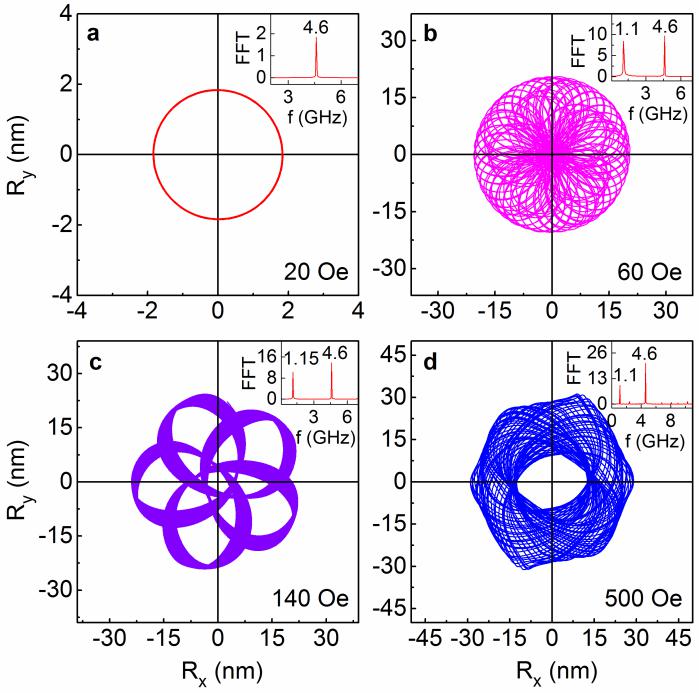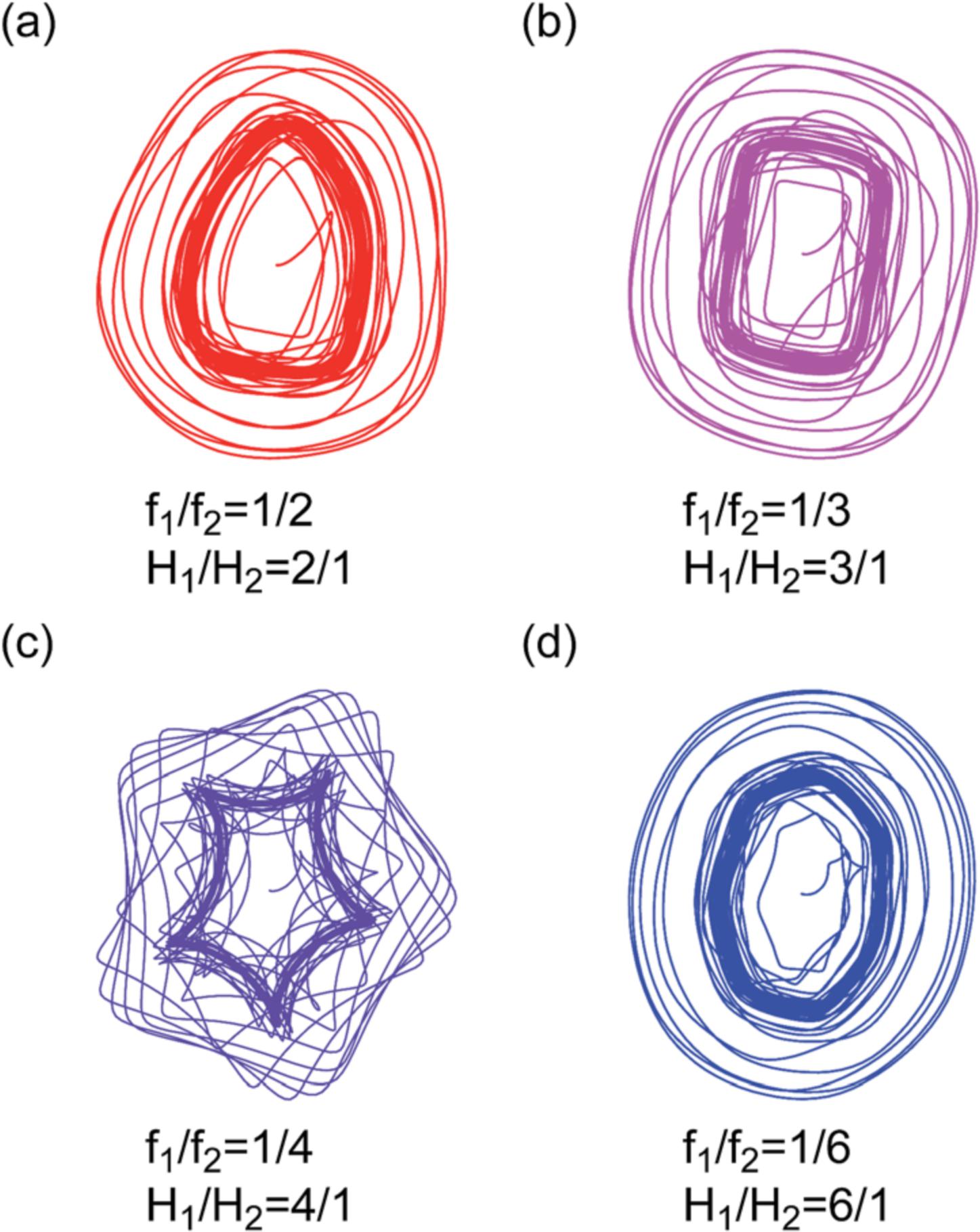
Resonant excitation of coupled skyrmions in magnetic nanodisks |
|
Resonant excitations of confined systems have aroused much attention because of their potential application in future microwave devices and spintronics. Under resonant excitations, the motion of topo-logical objects exhibits circular, elliptical or even stadium-like dynamics. However, more complex non-linear resonant excitations of topological objects in confined systems have seldom been reported and the associated physical mechanism remains unclear. We present an observation of flower-like resonant excitations for coupled skyrmions in Co/Ru/Co nanodisks activated by a single-frequency microwave magnetic field by means of numerical simulation. We find that flower-like dynamics of coupled skyrmions is strongly associated with the large non-local deformation of the topological density distribution of coupled skyrmions, which can be tuned by the field amplitude. Polygon-like resonant excitation is observed and modulated from triangle-like to heptagon-like dynamics by a dual-frequency microwave field with a commensurate frequency ratio. The solutions to the extended Thiele's equation show that the factors governing the polygon-like excitations of skyrmions are: (1) the frequency f1 of the external field which has to be equal or close to the eigen frequency of the skyrmion. (2) A dual-frequency field with an integer frequency ratio is necessary. (3) The effective mass of the skyrmion associated with the time derivative of the topological density is important to the polygon-like resonant excitation. These results distinguish a skyrmion from other topological objects in dynamics and will contribute to the deep understanding of the collective excitation of skyrmions.
Fig.3£ºInfluence of the amplitude of a microwave field on the trajectory of the guiding center. The frequency of the microwave field is 4.60 GHz. (a), (b), (c) and (d) show the trajectories of the guiding center in 30, 50 ns when the skyrmion is excited by a field of 20, 60, 140 and 500 Oe, respectively. The insets in the upper-right corners show the corresponding FFT spectra..
Fig: Transformation of the topological resonant trajectory of the guiding center in different microwave magnetic fields with the wave form H1sin(2¦Ðf1t) + H2sin(2¦Ðf2t). (a), (b), (c), (d) f1 is chosen to be1.15 GHz and the ratio of f1/f2 is 1/2, 1/3 1/4 and 1/6, respectively. The corresponding ratio of H1/H2 is 2/1, 3/1, 4/1, and 6/1, respectively. The amplitude H1 is 50 Oe. |
|

